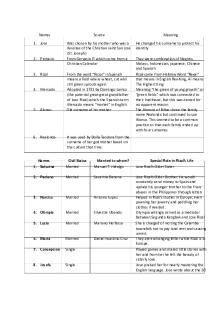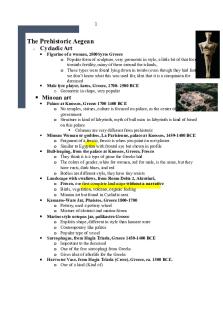Embodiments of Life and Death through Art PDF

| Title | Embodiments of Life and Death through Art |
|---|---|
| Author | Stephanie Sandler |
| Course | AP Art history |
| Institution | High School - USA |
| Pages | 1 |
| File Size | 24.3 KB |
| File Type | |
| Total Downloads | 79 |
| Total Views | 166 |
Summary
An essay about the Embodiments of Life and Death through Art....
Description
Embodiment of life and death explores the taboos, shame, and poverty surrounding woman’s menstrual cycles. Woman and young girls have been taught to deal with periods in secrecy as the topic of menstruation is frowned upon in our current culture. Due to taboos, and stigma surrounding menstruation woman and young girls living in hardship struggle to afford sanitary products which has led to a worldwide issue known as ‘Period Poverty’. The main objective of the photographic work is built upon the progress several activist groups have made tackling period poverty and help keep the issue in the mainstream media. It aims to create a beautiful concept surrounding menstruation using several mediums photography, video - documenting a live performance. Using an alternative method -Napkins, opposed to sanitary wear to gather menstrual blood will be used. Once the Napkin becomes saturated or unusable to stem the flow, they will then be created into small sculptors using the technique origami. Origami original benefited those from Europe, China and Japan and practised by few as it was seen as a luxury activity due to the expensive cost of paper[1] (WNY Book Arts Center, 2019). The objective of the performative piece
It is believed that more than 800 million woman and young girls from the ages 15 to 49 years are menstruating and will menstruate for around 3,000 days within their lifetime[2] (Walsh and Mwinemwesigwa, 2019). Menstruation is one of the most natural acts that occurs within women’s body however it is shadowed by shame, secrecy leading to isolation, embarrassment as well as impacting on woman and young girl’s mental health. Period poverty has developed through this shaming and stigma along with the taxation placed on sanitary product identifying them as luxury items. A survey by Plan International UK identified that 14% of girls had to borrow sanitary products from friends. It also found that 12% have used improvised menstrual products as an alternative way to stem their flow[3] (Plan International UK, 2019). Period Poverty is a global issue not just in developing countries but developed countries also. It is a human right to have access to clean water and sanitation, nonetheless 2.3 million people live without basic sanitation. With this basic right being ignored woman using alternative methods have suffered a knock-on effect to their suffering from embarrassment, staining their clothing, smell and also known to have developed infections as a result....
Similar Free PDFs

Life and Works of Rizal
- 57 Pages

Life and Works of Rizal
- 16 Pages

Life and works of rizal
- 3 Pages

ART AND Architecture OF Assam
- 30 Pages

Meaning of death
- 7 Pages

Death of a salesman
- 2 Pages

Estimating Time of Death
- 3 Pages
Popular Institutions
- Tinajero National High School - Annex
- Politeknik Caltex Riau
- Yokohama City University
- SGT University
- University of Al-Qadisiyah
- Divine Word College of Vigan
- Techniek College Rotterdam
- Universidade de Santiago
- Universiti Teknologi MARA Cawangan Johor Kampus Pasir Gudang
- Poltekkes Kemenkes Yogyakarta
- Baguio City National High School
- Colegio san marcos
- preparatoria uno
- Centro de Bachillerato Tecnológico Industrial y de Servicios No. 107
- Dalian Maritime University
- Quang Trung Secondary School
- Colegio Tecnológico en Informática
- Corporación Regional de Educación Superior
- Grupo CEDVA
- Dar Al Uloom University
- Centro de Estudios Preuniversitarios de la Universidad Nacional de Ingeniería
- 上智大学
- Aakash International School, Nuna Majara
- San Felipe Neri Catholic School
- Kang Chiao International School - New Taipei City
- Misamis Occidental National High School
- Institución Educativa Escuela Normal Juan Ladrilleros
- Kolehiyo ng Pantukan
- Batanes State College
- Instituto Continental
- Sekolah Menengah Kejuruan Kesehatan Kaltara (Tarakan)
- Colegio de La Inmaculada Concepcion - Cebu








